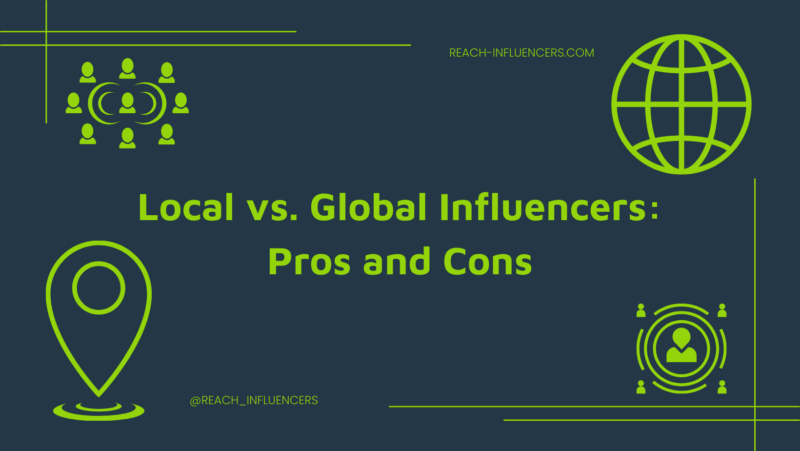Working with Micro-Influencers: Pros and Cons sets the stage for a captivating exploration of the dynamic world of digital marketing. As brands look to connect authentically with niche audiences, micro-influencers emerge as compelling allies, wielding the power to drive engagement and cultivate trust among their followers. This journey through the pros and cons unveils why these influencers are becoming essential in an era where genuine connections matter more than ever.
In today’s fast-paced digital landscape, micro-influencers stand out for their ability to engage smaller, yet highly engaged audiences. Unlike their macro counterparts, they often foster deeper relationships with their followers, resulting in higher trust and conversion rates. However, it’s essential to weigh the benefits against potential challenges, such as limited reach and varying content quality, to determine if partnering with these influencers aligns with your overall marketing strategy.
In a world bustling with activity and noise, the written word serves as a powerful vessel that transcends time and space. It possesses the remarkable ability to transport us to realms of wonder, provoke deep thought, and evoke a spectrum of emotions. This article will delve into the significance of storytelling, the intricate techniques that breathe life into characters and plots, and the transformative power of literature.
The Power of Storytelling: Working With Micro-Influencers: Pros And Cons
Storytelling is one of humanity’s oldest traditions, dating back to the dawn of civilization. From cave paintings to modern novels, stories have been a fundamental aspect of our existence. They are not merely entertainment; they serve as a mirror reflecting our values, beliefs, and societies. Through storytelling, we explore what it means to be human, connecting with one another across generations and cultures.
Every great story begins with a conflict, a struggle that challenges the protagonist to evolve. This fundamental principle not only drives the narrative forward but also resonates deeply with the audience. We find ourselves rooting for the hero, empathizing with their plight, and celebrating their triumphs. This emotional connection is what makes storytelling so compelling, as it allows us to experience lives vastly different from our own while also recognizing our shared humanity.

The Craft of Writing
Writing is an art form that combines creativity, skill, and an understanding of human psychology. To create an engaging narrative, a writer must master several essential elements:
1. Character Development
Characters are the heartbeat of any story. They must be relatable, flawed, and complex to draw readers in. A well-developed character evolves throughout the narrative, facing challenges that shape their identity. Take, for example, the character of Elizabeth Bennet from Jane Austen’s “Pride and Prejudice.” Her journey of self-discovery and growth captivates readers, allowing them to embark on her emotional rollercoaster.
2. World-Building, Working with Micro-Influencers: Pros and Cons
A vivid setting enriches a narrative, immersing readers in the story’s universe. Whether it’s the magical lands of J.K. Rowling’s “Harry Potter” series or the dystopian world of George Orwell’s “1984,” a carefully crafted environment enhances the plot and augments emotional engagement. Writers must consider the details of their settings—the sights, sounds, smells, and textures—to create an immersive experience.
3. Plot Structure
The backbone of every great story is its plot structure. A classic narrative arc consists of exposition, rising action, climax, falling action, and resolution. This structure guides the reader through the narrative, building tension and anticipation. The journey from an ordinary world to an extraordinary crisis and back again is what keeps readers enthralled.
4. Themes and Motifs
Themes are the underlying messages or central ideas that resonate throughout a narrative. They provoke thought and foster discussion, encouraging readers to reflect on their own beliefs and values. For instance, the theme of love transcending boundaries in “Romeo and Juliet” sparks conversations about societal norms and individual desires. Motifs are recurring elements that reinforce these themes, adding depth and richness to the storytelling.
The Transformative Power of Literature
Literature is not merely a collection of words; it is a transformative experience. It has the potential to challenge perceptions, inspire change, and foster empathy. Through stories, we gain insight into the lives of others—experiencing their joys and sorrows, their victories and defeats.
Consider the impact of Harper Lee’s “To Kill a Mockingbird.” Through the eyes of young Scout Finch, readers are exposed to the harsh realities of racism and injustice. This narrative not only educates but also instills a sense of moral responsibility, urging readers to consider their roles in promoting equality and understanding.
The Digital Age of Storytelling
In the age of technology, storytelling has evolved into new formats. Podcasts, social media platforms, and interactive storytelling allow for innovative ways to engage audiences. The immediacy of digital media fosters a new generation of storytellers who are breaking traditional boundaries, creating rich, immersive experiences that resonate with diverse audiences.
However, amid this evolution, the essence of storytelling remains unchanged. The core human desire to connect through narratives persists, reminding us that whether in print or digital form, stories will always hold a special place in our hearts.
Conclusion: Embrace the Magic of Stories
As we navigate the complexities of modern life, let us not forget the power of the written word. Stories inspire, challenge, and transform us. They allow us to explore the depths of our imaginations, confront our fears, and celebrate our triumphs. So, pick up a book, share a tale, or pen your own narrative. The world is waiting to be enchanted by the magic of your story.
In summary, the art of storytelling is an enchanting journey that beckons us to explore the vast landscape of human experience. Whether through intricate character arcs, immersive settings, or poignant themes, storytelling remains a vital part of our collective consciousness. Embrace it, and you may just find yourself transformed in the process.








